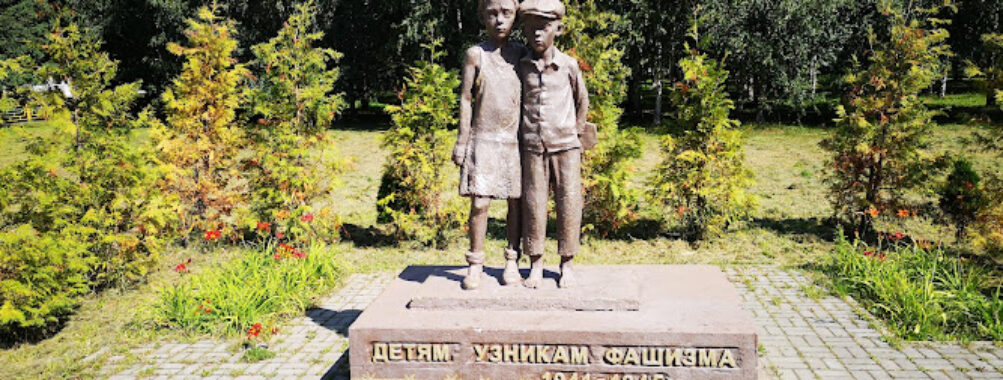
Pamyatnik Detyam Uznikam Fashizma
Table of Contents
Description
The Pamyatnik Detyam Uznikam Fashizma is a deeply moving historical landmark that quietly stands as a testament to the resilience and suffering of children imprisoned during the dark days of fascism. Unlike many grandiose monuments that shout for attention, this place whispers stories of innocence lost and courage found in the most harrowing circumstances. It’s a spot that pulls you in—not with flashy displays, but with a profound sense of reflection and respect.
What struck me the most when visiting was how thoughtfully the monument honors its young subjects without overwhelming visitors with despair. It’s designed to be approachable and contemplative, making it genuinely suitable for families, including kids. I remember taking my niece there, and even though the theme is heavy, the experience felt educational rather than frightening. It’s a rare balance to strike, but here, it works.
The monument’s simplicity is its strength. It doesn’t try to sugarcoat history or distract you with unnecessary embellishments. Instead, it invites you to pause, think, and connect with a painful chapter of the past through the eyes of children who endured unimaginable hardships. Visiting this site offers a unique chance to engage with history on a personal level, far beyond what textbooks can provide.
Key Features
- Dedicated exclusively to the memory of children imprisoned under fascist regimes, emphasizing their stories and experiences.
- Child-friendly design that allows younger visitors to engage respectfully without feeling overwhelmed.
- Subtle, evocative sculptures and inscriptions that provoke thought rather than shock, fostering a reflective atmosphere.
- Quiet surroundings that encourage visitors to spend time in contemplation or discussion, making it ideal for educational visits.
- Easy accessibility for families with children, including stroller-friendly paths and seating areas for rest.
- Located in a serene setting that contrasts with the harsh reality it commemorates, enhancing the emotional impact.
- Minimal crowds, providing a peaceful experience even during peak visiting times.
Best Time to Visit
If you ask me, the best time to visit Pamyatnik Detyam Uznikam Fashizma is during the shoulder seasons—late spring or early autumn. The weather is mild enough to wander around comfortably without the intense heat of summer or the biting cold of winter. Plus, these times tend to be less crowded, so you can really soak in the atmosphere without feeling rushed or distracted by large groups.
Early mornings are also a gem. There’s something about the quiet hush of dawn that makes the experience even more poignant. I remember arriving just as the sun was rising, casting long shadows over the monument, and it felt like the place was quietly waking up with me. It’s a moment that stays with you.
How to Get There
Getting to the Pamyatnik Detyam Uznikam Fashizma is pretty straightforward, but you’ll want to plan a bit depending on where you’re coming from. If you’re traveling by public transport, local buses or trams serve the area well, and the stop is just a short walk from the monument itself. That walk is actually a nice way to ease into the visit, letting your mind shift gears from the hustle of the city to something more reflective.
If you’re driving, there’s usually parking nearby, but it’s not a sprawling lot—more of a cozy spot that fits with the monument’s understated character. Just a heads up, during public holidays it can fill up, so arriving earlier in the day is a smart move. For those who enjoy a bit of walking, the monument is within reasonable distance from several city landmarks, making it an easy addition to a day of exploring.
Tips for Visiting
Here’s the deal: this isn’t a place for a quick photo op or a rushed visit. Give yourself at least an hour, maybe more if you’re the kind of person who likes to read every inscription and really let the stories sink in. It’s worth it, trust me.
Bring along some water and maybe a notebook or your phone to jot down thoughts or reflections. I found that writing a few lines helped me process what I was feeling—sometimes, visiting places like this stirs up a lot, and it’s good to capture it somehow.
Also, if you’re visiting with kids, prepare them gently beforehand. Explain that it’s a place to remember brave kids from long ago who went through tough times. Framing it as a story about courage rather than just sadness really helps. And don’t hesitate to ask questions or share your own thoughts with them—it turns the visit into a meaningful conversation rather than a somber silence.
Lastly, respect the quiet. This monument is a space for remembrance and reflection, so keeping noise to a minimum is appreciated by all visitors. And hey, if you find yourself moved, consider leaving a small token or note if the site allows it—sometimes these little gestures create a beautiful, shared human connection across time.
Location
Places to Stay Near Pamyatnik Detyam Uznikam Fashizma
Find and Book a Tour
Explore More Travel Guides
No reviews found! Be the first to review!